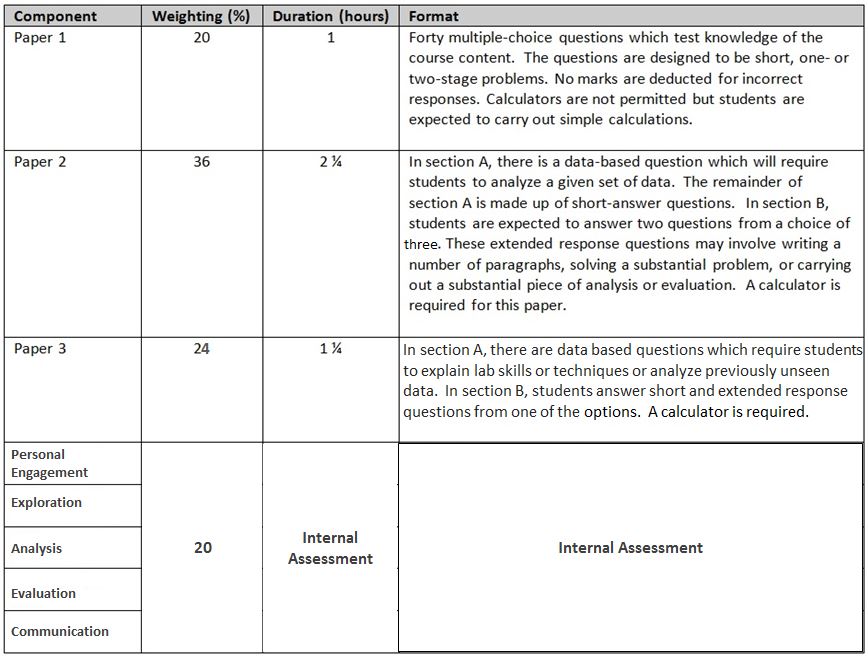Assessment in IB Biology
In general there are three types of assessment in IB biology at Skyline High School:
In IB Biology I your class grade is based solely on SHS course assessment. In IB Biology II, the course grade depends on SHS course assessment and your internal assessment. Learn more about SHS course assessment specific to IB Biology I and in IB Biology II.
If you take the full two year IB biology HL sequence and test the external exam, you can earn college credit depending on your IB score. The IB scores range from a 1 (low) to a 7 (high). Exams are marked by external examiners. Internal assessment of lab work and the Collaborative Sciences Project are assessed by your classroom teacher, but are sent to the IB for moderation. This is the breakdown of how your IB score is determined by the IB Organization:
If you take the full two year IB biology HL sequence and test the external exam, you can earn college credit depending on your IB score. The IB scores range from a 1 (low) to a 7 (high). Exams are marked by external examiners. Internal assessment of lab work and the Collaborative Sciences Project are assessed by your classroom teacher, but are sent to the IB for moderation. This is the breakdown of how your IB score is determined by the IB Organization:

